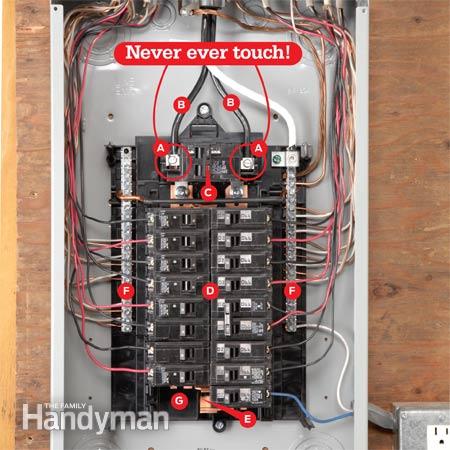


Most homes ideally have 100 or 200-amp breaker boxes depending on the amount of electricity that the panel needs to handle and the number of circuits that are added to the main circuit breaker panel. Understanding the Difference between Breaker Box Sizes This is where the current flows from the main breaker to the branching circuits and reaches the outlet. Bus Bars – The two rows in the main circuit breaker panel connect to hot bus bars.Sub-Panels – sub-panels are small breaker boxes designed to handle more circuits when you don’t have the space to accommodate new circuits.Arc Fault Circuit Interrupters – These are special purpose circuit breakers designed for additional safety against electric fires and electrocution.Double-pole breakers are designed for large home appliances like air conditioners, water heaters, washing machines and stoves. Double-Pole Breaker – These pole breakers are available in different amperages and can handle 240 volts.Single-Pole Breaker – These single switches are typically between 15-20 amps, are commonly found in most circuit breakers and can handle up to 120 volts.Standard breakers can be further subdivided into the following two categories:

So if there is an overload due to a short circuit or because too many appliances are running simultaneously, the corresponding circuit breaker automatically trips to shut off the flow of current. The Main Circuit Breaker – This is the switch that goes on and off to control the flow of current.These are the main electrical supplies and materials of the circuit breaker panel: Main Safety Features of a Circuit Breaker Panel The safety mechanism of the circuit breaker panel guards your home and its residents against all the hazards of improper grounding, short-circuits, voltage fluctuations, faulty wiring, and damaged insulation. The circuit breaker panel supplies power but is also designed with safety features that protect the wiring and avoid electrical shocks and fire due to overloading or heat build-up. This leaves you and your family susceptible to electric hazards from your home appliances, HVAC system, and the electronic equipment and electric shocks, burns and fires can do serious damage to life and property. The electricity that flows from your utility company’s line passes through the meter and into the main circuit breaker panel. Why is the Circuit Breaker Box Important for Home Safety? So as a homeowner, you would only need to access the main circuit breaker panel when the power trips or when performing repairs or replacements. These small switches are called breakers and their function is to ensure electrical safety. The circuit breaker box also houses other smaller sub-switches that connect with specific areas of your house. The main circuit breaker panel is essentially a big switch that safely distributes the supply of power to your house. Here’s everything a homeowner needs to know about the circuit breaker panel/electrical breaker box: How Does Circuit Breaker Box Work? Knowing what it is, why it’s important, and how it works may help you with troubleshooting home electrical issues and avoid dangerous situations.

Every homeowner must be familiar with the operation and the features of the circuit breaker panel/electrical breaker box that sits in the utility room and supplies power to the house.


 0 kommentar(er)
0 kommentar(er)
